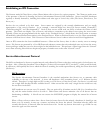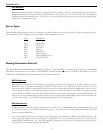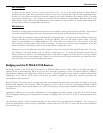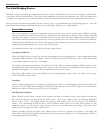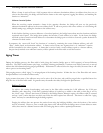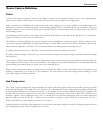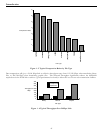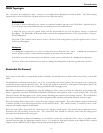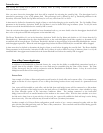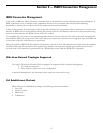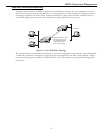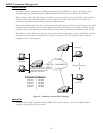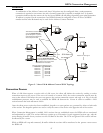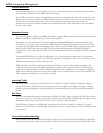
Introduction
19
WAN Topologies
The router may be connected to other routers in two configurations: Multipoint or Point-to-Point. The WAN routing
method used is set in the WAN Set-Up Menu under the Link Operation option.
Point-to-Point
In a Point-to-Point configuration, two routers are connected together with one or two WAN links. Each link may be
set to an always active (unconditional) state or a backup/recovery (conditional) state.
A single link may be used for general traffic, and the second link may be used for disaster recovery or increased
throughput. The Bandwidth on Demand feature controls the conditional behavior of the second link in a Point-to-
Point configuration.
The Time of Day connect feature may be used in a Point-to-Point configuration to provide specific hours of access
or increased throughput.
Multipoint
In a Multipoint configuration, an router is connected to more than one other router. A Multipoint configuration
consists of three or more routers connected together on the same wide area network.
A dual-link router that is connected to two different routers (one on each link) is in a Multipoint configuration.
The Time of Day connect feature may be used in a Multipoint configuration to provide specific hours of access.
Bandwidth On Demand
Each router has the ability to automatically enable or disable a second link based on traffic activity, time of day, or main link
failure.
The Bandwidth on Demand feature allows you to use a second link only when required, thus saving the cost of having the
second link up and connected all of the time. The second link could be connected to an inexpensive dial-up line that is only
required when the main link fails or is exceeding a predefined traffic throughput level.
Bandwidth on Demand is accomplished by using the intelligence of the router to measure the utilization of the primary link.
When it approaches saturation, Bandwidth on Demand will initialize and loadshare with a second stand-by link. This will
effectively increase the throughput of the router, thereby alleviating the saturation and avoiding data loss. The second link is
then deactivated when traffic levels drop off to where the primary link can adequately handle the traffic load once again.
When the stand-by link is activated, the router raises the outgoing control signals. This control-signal transition is then used
to initiate autodial or auto call-setup procedures on the interface device. This autodial feature is standard on most of the
modems and terminal adapters on the market.
When the second link is deactivated, the router lowers the outgoing control signals. This control-signal transition is used to
disconnect the call and bring down the link. The second link then remains in stand-by mode until the bridge/router
determines that the link must be used again.
To set up a Bandwidth on Demand installation, you would first connect the second link of the router to a public circuit-
switched network using the appropriate interface device. You would use high-speed modems with telephone lines, terminal
adapters with an ISDN network, or digital modems with switched digital services.



